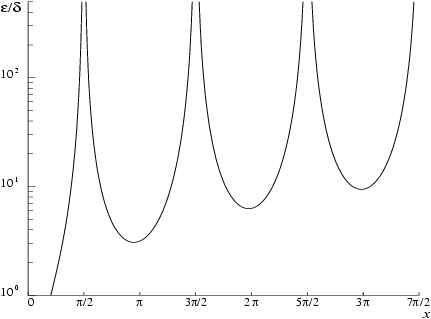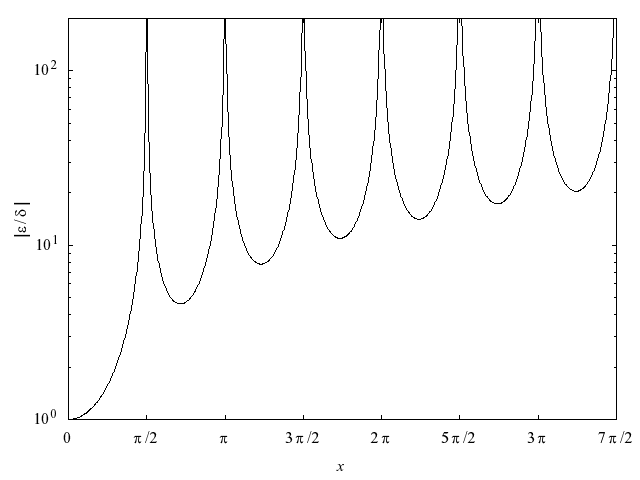NAG Library Routine Document
S07AAF
1 Purpose
S07AAF returns the value of the circular tangent, , via the function name.
2 Specification
| REAL (KIND=nag_wp) S07AAF |
| INTEGER |
IFAIL |
| REAL (KIND=nag_wp) |
X |
|
3 Description
S07AAF calculates an approximate value for the circular tangent of its argument,
. It is based on the Chebyshev expansion
where
and
.
The reduction to the standard range is accomplished by taking
where
is an integer and
,
i.e., where .
From the properties of
it follows that
4 References
Abramowitz M and Stegun I A (1972) Handbook of Mathematical Functions (3rd Edition) Dover Publications
5 Parameters
- 1: X – REAL (KIND=nag_wp)Input
On entry: the argument of the function.
- 2: IFAIL – INTEGERInput/Output
-
On entry:
IFAIL must be set to
,
. If you are unfamiliar with this parameter you should refer to
Section 3.3 in the Essential Introduction for details.
For environments where it might be inappropriate to halt program execution when an error is detected, the value
is recommended. If the output of error messages is undesirable, then the value
is recommended. Otherwise, if you are not familiar with this parameter, the recommended value is
.
When the value is used it is essential to test the value of IFAIL on exit.
On exit:
unless the routine detects an error or a warning has been flagged (see
Section 6).
6 Error Indicators and Warnings
If on entry
or
, explanatory error messages are output on the current error message unit (as defined by
X04AAF).
Errors or warnings detected by the routine:
The routine has been called with an argument that is larger in magnitude than
; the default result returned is zero. The value of
is given in the
Users' Note for your implementation.
The routine has been called with an argument that is too close (as determined using the relative tolerance
) to an odd multiple of
, at which the function is infinite; the routine returns a value with the correct sign but a more or less arbitrary but large magnitude (see
Section 7). The value of
is given in the
Users' Note for your implementation.
7 Accuracy
If
and
are the relative errors in the argument and result respectively, then in principle
That is a relative error in the argument,
, is amplified by at least a factor
in the result.
Similarly if
is the absolute error in the result this is given by
The equalities should hold if
is greater than the
machine precision (
is a result of data errors etc.) but if
is simply the round-off error in the machine it is possible that internal calculation rounding will lose an extra figure.
The graphs below show the behaviour of these amplification factors.
Figure 1
Figure 2
In the principal range it is possible to preserve relative accuracy even near the zero of
at
but at the other zeros only absolute accuracy is possible. Near the infinities of
both the relative and absolute errors become infinite and the routine must fail (error
).
If
is odd and
the routine could not return better than two figures and in all probability would produce a result that was in error in its most significant figure. Therefore the routine fails and it returns the value
which is the value of the tangent at the nearest argument for which a valid call could be made.
Accuracy is also unavoidably lost if the routine is called with a large argument. If
the routine fails (error
) and returns zero. (See the
Users' Note for your implementation for specific values of
and
.)
None.
9 Example
This example reads values of the argument from a file, evaluates the function at each value of and prints the results.
9.1 Program Text
Program Text (s07aafe.f90)
9.2 Program Data
Program Data (s07aafe.d)
9.3 Program Results
Program Results (s07aafe.r)


